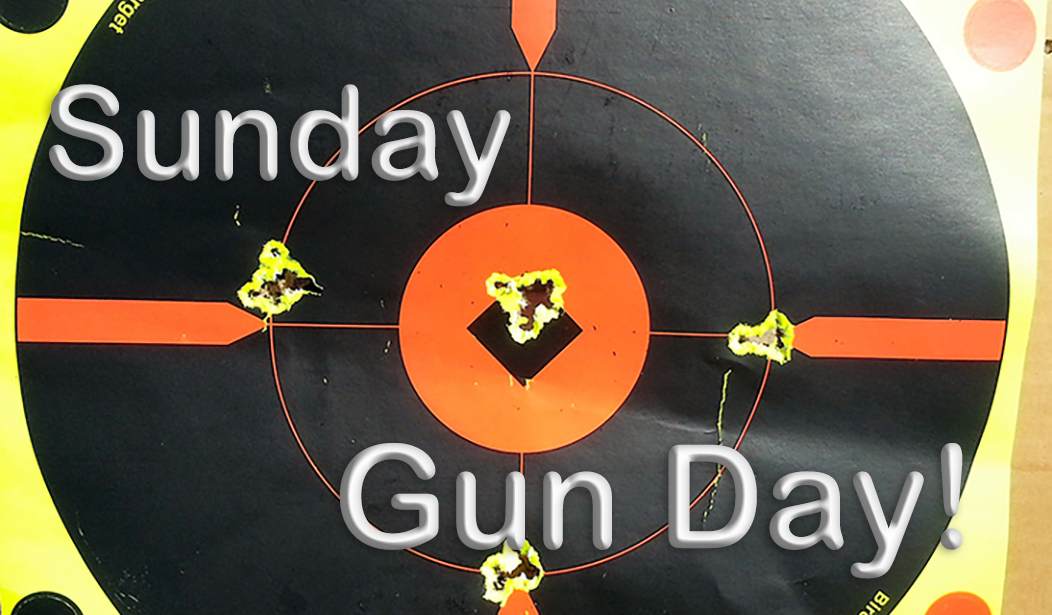I’ve always been a big fan of the Thompson submachine gun, even though I’ve never fired one. My Dad did, just after the end of World War 2, when he was helping run a range complex on an Army airfield at Victorville, California. They had a few M1 Thompsons on the range, and since the two officers in charge – Dad and another US Army Air Forces lieutenant – had to test-fire a certain amount of ammo out of each batch they received, and since some of that ammo was .45ACP, why use one of the range 1911 pistols to test-fire when one could use a Thompson instead? Dad described it as great fun, but a little bit of a challenge to control.
As it happens, though, there were some interesting variations on the basic Thompson design, including a couple that didn’t use the usual .45 ACP round – but instead, something with a bit more oomph.
There Were Actually Two
Whenever we think of the Thompson guns, we think of the classic Chicago Typewriter: The 1921/1927 and the other Thompson submachine guns, usually with a big 50-round drum stuffed full of .45 ACP rounds. They were great – big, heavy, brutal, and effective. They also had a rather unique action, courtesy of designer Brigadier General John T. Thompson, used something called a “Blish lock,” based on the adhesion of inclined metal surfaces under pressure. It worked great with the .45ACP and with a couple of experimental models firing the .30 Carbine round.
Read More: Sunday Gun Day Vol. II Ep. VIII - The Famous Thompson Submachine Gun
But there were two other Thompson guns, chambered in .30-06, intended as full-powered versions. Not many folks seem to know about these, probably because neither ever moved past the prototype stage, but they were made by the Auto-Ordnance company that built the more familiar guns, they were fired, and they were evaluated by the War Department – and rejected.
The first was the Thompson Autorifle.
The Autorifle
In 1923, the Auto-Ordnance Corporation submitted several prototypes of the Thompson Autorifle for military evaluation. The rifles were chambered in the .30-06 that the United States military was already using, with variants made in the Russian 7.62x54R that was then in use in the Mosin-Nagant rifle, along with the .276 Pedersen and the .303 British. It used, initially, a five-round magazine with lubrication pads; that was an added complication, as the gun would only reliably feed with lubricated ammo. In later refinements, the gun was adapted to take the 20-round magazine of the Browning Automatic Rifle, or BAR.
The Autorifle was a bit of an oddball. It used the same delayed-blowback Blish lock as the submachine guns, but it proved complex and unreliable when used for the full-power .30-06 rounds. It also didn’t look much like the famous submachine gun; it had a full-length walnut stock, making it look more like the general run of primary service rifles in use at the time.
The piece didn’t blow up any skirts at the War Department in 1923, nor did it when Auto-Ordnance tried again in 1929, with the same rifle in .276 Pedersen; that process ended up with the selection of the M1 Garand, and the Autorifle lost out. Only a few survive today.
In Britain, the Birmingham Small Arms Company (BSA) made a few Autorifles under license, chambered in the .303 British, but again, the British Army found it unacceptable.
Read More: Sunday Gun Day XLV - The Greatest Battle Implement Ever Devised, the M1 Garand
The .30-06 Thompson
Then, in 1943, Thompson tried again. World War 2 was underway, after all, and the United States military forces were looking for weapons. The Auto-Ordnance Corporation again submitted a prototype, just one, and what an odd-looking critter it was.
The new prototype could have taken the place of the Browning Automatic Rifle and possibly filled in for the M1 Garand, too, although it was a bit heavy for a main issue rifle, weighing in at 17 pounds. Unlike the Autorifle, the new Thompson, a select-fire brute, used a lot of the components of the more traditional Thompson submachine guns. From appearances, it looks as though they used the standard Thompson trigger group, stock, and a modified Thompson receiver. The magazine was the BAR magazine, with lubricating pads added.
The Rock Island Auction house, which produced the video shown here, described the workings of the 1943 .30-06 Thompson thusly:
Internally, the bolt bears a resemblance to the traditional Thompson bolt, but instead of the Blish lock there are a pair of brass flange levers installed in the sides of the receiver, an ejector claw actuated by the bolt, and a threaded recoil spring housing extension, and the bolt is fitted with an internal firing pin and a spring-loaded plunger for the bolt face installed in a flanged extension which, on final approach of the cartridge into the chamber spreads outward to engage the rear of the barrel.
Interestingly, the Rock Island Auction people have this gun now, and it will be going up on auction on December 6th, 2025. Expected sale price? $75,000 to $130,000. You can bid here, if you’re inclined.
The .30-06 Thompson Prototype!
— Rock Island Auction (@RIAuction) November 2, 2025
It's the only known example of the Thompson Autorifle, and this 17-pound beast enjoys some fascinating modifications. pic.twitter.com/lsWjf5DRHJ
Where Are They Now?
In private collections or museums, we should hope. These are probably some of the most valuable firearms in the world. You could hardly take one of these out to the range to shoot, not when they are quite literally one of a kind. You certainly wouldn’t take one hunting. If you want a .30-06 semi-auto service rifle, the M1 Garand is still easy to find, it works just as well as ever, and you can take one to the range to shoot it without worry of something breaking, as repair parts are readily available.
And, honestly, the M1 is pretty cool all on its own. But if the Thompson people had worked just a little harder on that design, it may have been possible that you could have picked up a .30-06 Thompson Autorifle from the Civilian Marksmanship Program – and wouldn’t that have been a heck of a thing.
Firearms history is neat. It's replete with oddballs and one-offs like this. That's what makes studying and writing about guns so much fun.














